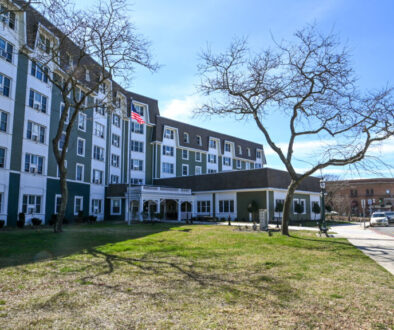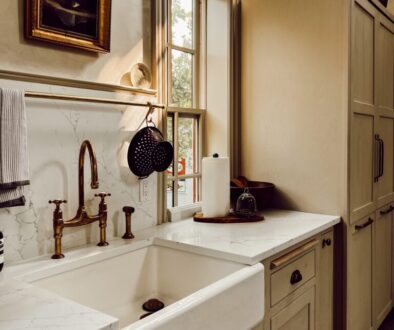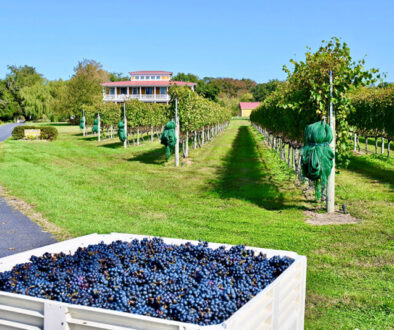The Kiwanis Clubhouse

The Kiwanis Club of Cape May celebrates 100 years of community service in 2024 with a gala dinner at the Grand Hotel and perhaps aperitifs on their clubhouse sundeck. This is a storied organization in Cape May with a history of notable members, significant accomplishments, and community involvement.
“The Cape May Kiwanis was formed in 1924, with the Kiwanis originally formed in Detroit in 1914,” said Bob Morris, a former chapter president. “I joined in 1989 and we had 52 members. I have so many good memories here. I’ve been for 34 years, and it is home to me—and it is home to my kids too.”
And since this is Cape May, we do things a little differently. The Cape May Kiwanis is the only chapter in the country that owns its clubhouse. And a notable clubhouse it is.
Located at 1041 Beach Avenue, the Kiwanis Clubhouse was originally Cold Spring Lifesaving Station 136, built by the U.S. government in 1891. The building was once one of a string of stations placed along the New Jersey coast—one about every five miles or so—to respond to shipwrecks. The U.S. government recognized the need for a professional service to watch over the nation’s coastlines, and the station was constructed to act as headquarters and living space for lifesaving crews. These surfmen kept watch over the sea until a storm blew in and they were required to dash to their boats and rescue mariners in distress.

The United States Life-Saving Service was created in 1848 in response to the increasing number of costly shipwrecks along the nation’s coastlines. Congress authorized funds for the task, but only a few shacks were placed along the coast, manned by volunteer crews, ultimately proving incapable of responding to large ships in distress. In 1871 a young lawyer from Maine named Sumner Increase Kimball took control of the service, setting it on a road to professionalism by building well-outfitted stations, establishing six-man boat crews at all stations, and creating standards of performance for crew members.
The government eventually built 42 sturdy lifesaving stations along the Jersey coast. Many are now gone, including Station 40, a picturesque Victorian structure built in the 1870s in Cape May Point near the lighthouse. After a half-century of service, the building was decommissioned and sold to a local developer. But it was quickly damaged by storm tides and eventually burned to the ground in 1959. Some stations were saved and are now museums, including Ocean City and Stone Harbor. Others, like Station 136, have been repurposed; still others are private residences.
Station 136 was designed by Albert Bibb, a professor of architecture for Catholic University in Washington, D.C., and it originally stood at Philadelphia Avenue and the beach. Bibb was responsible for the designs of many of the stations along the coast and this particular one is Bibb Style Number 2. The buildings were designed specifically for the business of ocean rescue and to present a professional image of the Life-Saving Service. Most stations were designed like a fire station, with the living area on the upper floor and the equipment on the main floor.




The building is notable for its singular, pyramidal cupola that is lit by two fixed-light windows in each direction. The southwestern, front gable-roofed section originally accommodated Life-Saving Service staff and it is connected to the northeast section by a gabled roof, forming a cross with the other section. It is listed as a contributing property in the Cape May Historic District, and therefore any requests to significantly alter or demolish the structure would first need to be reviewed by the Cape May Historic Preservation Commission.
Station 136 was in service as a lifesaving station until the turn of the 20th century. Power boats were replacing oared boats, and in 1915 the lifesaving service merged with the Treasury Revenue Cutter Service to form the U.S Coast Guard. The stations were eventually no longer needed and remained property of the U.S Government until they were decommissioned in 1937. The government decided to auction the properties a short time later.
“In 1939 the Kiwanis Club sent Nick Swain from Swain’s hardware—three generations of Swains ago—to see about buying the building,” Bob said. “He went up there and bought it for $120. But a stipulation was we had to move it from its location at Philadelphia Avenue. So, the Kiwanis bought a nearby piece of property, put in a foundation, and dropped the building where it now still stands.”
The Cape May Kiwanis are a local chapter of Kiwanis International, a global organization of volunteers dedicated to improving the lives of children. “Since Kiwanis serve the children of the world, the Boy Scouts and Girl Scouts needed someplace to meet—that’s why the Kiwanis originally bought the building,” Bob said. “We didn’t even meet there for many years. We had our lunches at Colton Court until we realized we had our own building and could meet there! We’ve maintained the building and renovated it several times. The building gets a lot of use—we use it as a polling station, and several community groups also use it.”
The clubhouse is available for rent, and Kiwanis members get access to the most boss clubhouse around.
I’ve had the pleasure of looking out from that singular, pyramidal cupola and I still remember the sweeping views as utterly mesmerizing. Nature’s beauty—and fury—is on full display in every direction from that perch. I couldn’t look away. ν



